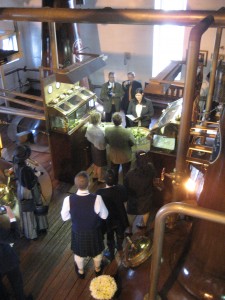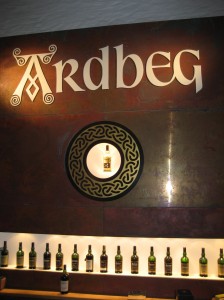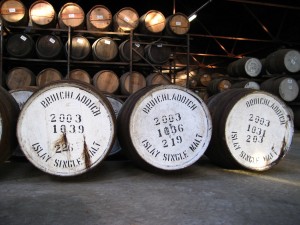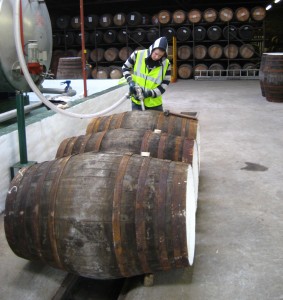With no Internet access at my Islay cottage, I rely on the WiFi at the Lochside Inn in Bowmore or at the house of my friend Martine Nouet. Martine, as you may know, is a fantastic writer of all things whisky and food, and pioneered the cuisine of paring the two.
Recently, Martine asked me to join her to taste some new releases for Whisky Magazine’s French edition (http://www.whiskymag.fr/mag.php), which she edits, as well as writes for. The magazine recently came out and is on shelves throughout France. If you’ve ever wanted to read me in French, this is your chance. If you, like me, can’t read French, I’ll provide my tasting notes in the original English for your enjoyment:
Auchentoshan 1999; 46%
Score: 7.5
Nose: Lemon zest, apples and guava. Fresh bread. Faint flowers. Dash of water brings out light peppers.
Palate: Medium-dry and slightly chewy. Tropical fruit, pineapple, peach and faint lemon. Developing malt. Pepper with water.
Finish: Long and warming. Throaty.
Comments: Pleasant aperitif or daytime dram.
Glen Ar Mor; 46%
Score: 8.75
Nose: Feisty fun. Bubblegum. Spring wildflowers. Mouthwatering play-dough. Mistletoe.
Palate: Rich bubble gum that settles into berries and cream. Cranberries. Grassy. Ginger-cinnamon snaps.
Finish: Dashes away quickly before peeking out playfully one last time.
Comments: Looking forward to seeing this exciting youngster mature under the tutelage of its wooden headmaster.
Lambertus Single Grain 10 years; 40%
Nose: Fruitier than expected with bananas and strawberry mousse; budding saplings coming under oak; vanilla; toffee; cherry with water.
Palate: Medium body. Banana crème pie; strawberries; vanilla; overtones of fallen leaves; subtle chestnuts; milk chocolate; dark chocolate with water.
Finish: Gentle waves with a cherry chaser.
Comments: A simple and enjoyable grain whisky that grows on you.





